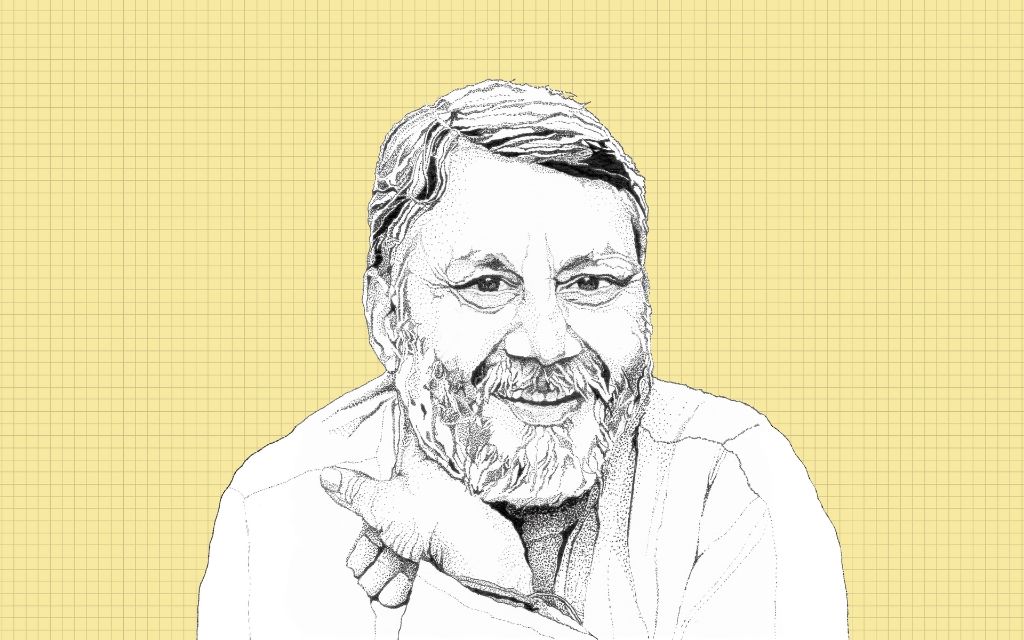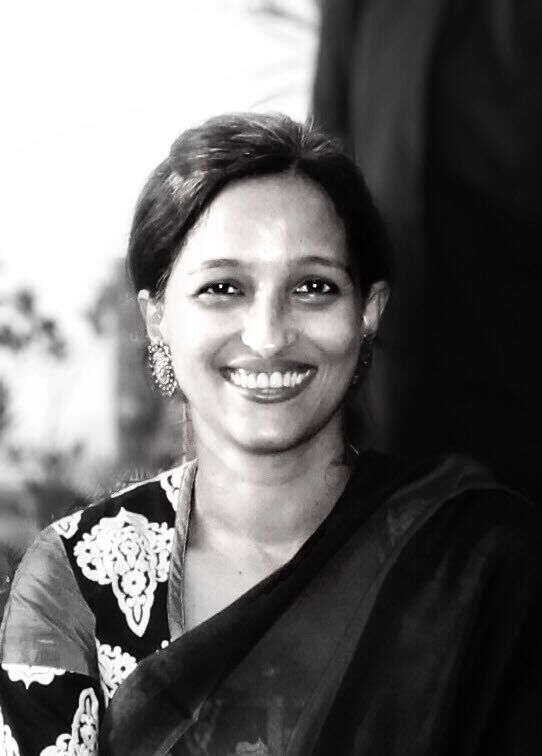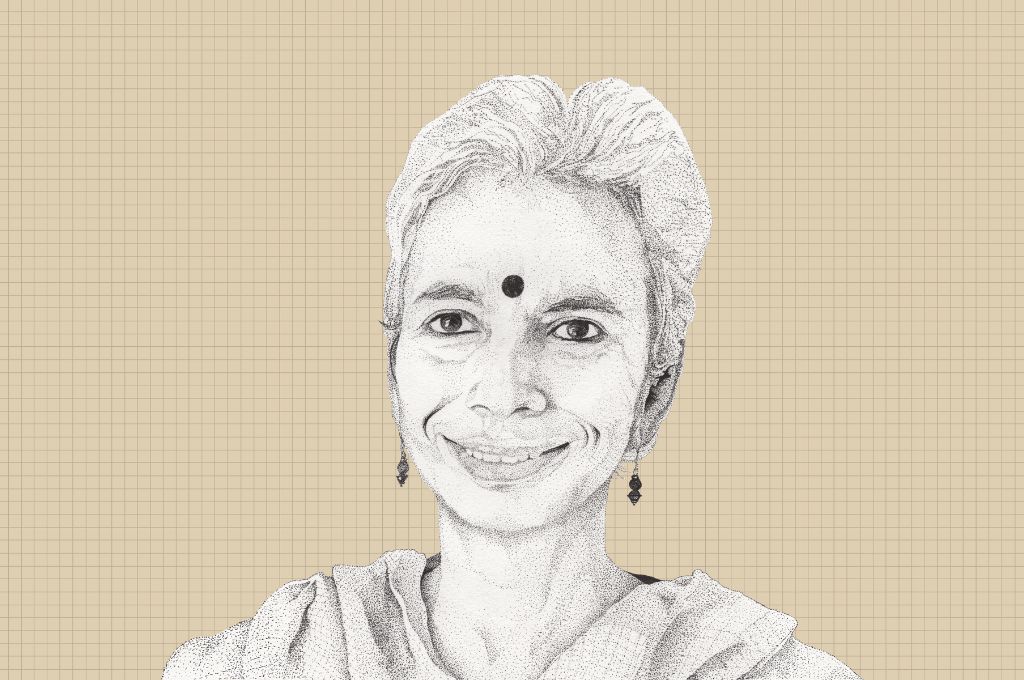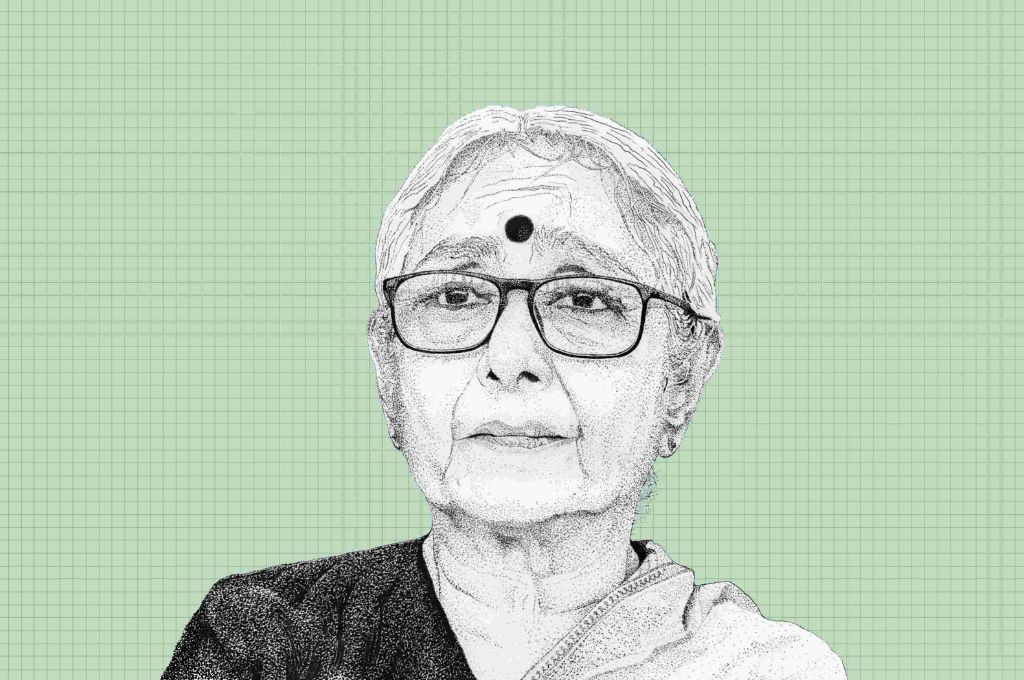Rajendra Singh is a water conservationist and environmentalist from Alwar, Rajasthan. He won the Ramon Magsaysay Award in 2001 and the Stockholm Water Prize, also known as the Nobel Prize for water, in 2015. He is the founder of the Tarun Bharat Sangh (TBS), a 45-year-old nonprofit that has been working on making villages self-reliant by constructing johads1 and other water conservation structures to collect rainwater. Rajendra mentors a national collective of water-related organisations, called the Rashtriya Jal Biradari, which has worked on rejuvenating more than 100 rivers in India.
In this interview with IDR, he reflects on what drove him to work on water conservation, what true self-reliance for a village looks like, and how the pandemic is reversing some of the disastrous effects of development.
You have studied literature and Ayurveda, what led you to start working on water and other related issues?
When I came to Gopalpura village in Alwar in 1985, a disease called rathondi (night blindness) was prevalent here due to malnutrition. So, I started providing treatment for it. Soon, I realised that the community was not educated, so I started a school. My work on medicine and education went on for seven months.

Related article: IDR Interviews | Dr Vandana Shiva
One day, an old farmer named Mangu Meena said to me, “We don’t need medicine, we don’t need education. We first need water.” The people in Gopalpura were facing a severe water shortage, more than other villages in Alwar. The land was completely barren and desolate. I told him that I knew nothing about water conservation. He said, “I will teach you.” Now, you know how we are as youngsters—we ask a lot of questions. So, I asked him, “If you can teach me, why don’t you do it yourself?” With tearful eyes, he said, “We used to do it ourselves, but ever since elections have started in the village, the villagers have divided themselves according to parties. They don’t work together any more, nor do they think about a common future. But you don’t belong to any one side. You are for all.” I understood what he was saying. Though he was not educated, he was wise. I started working on water conservation.
My entire training on water took all of two days. Mangu kaka took me to 25 dry wells in the village, and made me climb down 80 to 150 feet, to see the belly of the earth. I looked at the different types of fractures in the wells, and understood how we can save water from being stolen by the sun. While it is the sun that gives us rainfall, or water, in Rajasthan, it is also the biggest thief of water, via evaporation. My job was to identify ways to collect the water and make it reach the belly of the earth, so that it does not evaporate.
This is exactly what I did in Gopalpura, by building johads. After just one monsoon, the wells and underground aquifers started getting recharged. That water in turn rejuvenated the small springs that had dried up. All we had to do was recharge underground aquifers. As this type of work spread to other villages and states, 12 rivers were revived, which have now become perennial.
From Gopalpura, how did you start working in other villages? And what effects of water conservation work did you see in the region?
Now, when water came back to the village, the villagers called everyone who had migrated for work back home—there was reverse migration. They started farming on the land again, and when they had their first crop, the villagers told all their relatives how they had been able to get water and start farming. Those relatives started inviting me to their villages. From Gopalpura, the water conservation work started spreading to Karauli, Dholpur, Sawai Madhopur, Bharatpur, and so on. I started three types of yatras: The first was ‘Jal Bachao Johad Banao‘ (save water, practice water harvesting); the second was ‘Gram Swavalamban’ (village self-reliance); and the third was ‘Ped Lagao Ped Bachao‘ (plant trees, save trees). Through these yatras, and by using existing social networks, we scaled up the work.

When they saw water come back the village, they started working on water conservation and revived their agricultural work.
Soon, people in this region started seeing the impact of this work. In Karauli, the people were helpless and unemployed and were forced to engage in unlawful activities. When they saw water come back the village, they started working on water conservation and revived their agricultural work.
The forest cover in the region has increased from two percent of the land to 48 percent. The people who earlier left these villages to work as truck-loaders for contractors in Jaipur are now employers, giving work to contractors to transport their farm produce. They are now employing the same people for whom they were doing labour earlier.
The biggest impact of water conservation has been on the micro-climate. Earlier, we would see clouds from the Arabian sea pass over our villages, but there was no rain, since the green cover was low in the area, and heat from the mines and dry areas would not allow these clouds to condense and precipitate. Now, there is increased greenery and micro-clouds forming over them. The Arabian sea rain clouds merge with these micro-clouds and bring rain here, instead of passing over. Since there is moisture in the soil and the air due the greenery, temperatures have reduced as well. Our water conservation work in the region has thus also led to mitigation of climate change effects.

Illustration: Aditya Krishnamurthy
What were some of the challenges you faced?
One of the biggest challenges we faced was from the government. At Gopalpura, the irrigation department tried to impose restrictions under the Irrigation & Drainage Act 1954, saying that we were blocking ‘their’ water. Now, if the rain falls over someone’s farm, who does that water belong to? The farmer or the dam? I told them, “If the rain falling on the farmland doesn’t belong to the farmer, you should stop the rain, let there be no rain in the village.” We did not block someone else’s water. We were only collecting the rainwater which fell on the farmland. Our slogan was, “khet ka paani khet mein, gaon ka paani gaon mein” (a farmland’s water stays on the farmland, a village’s water stays in the village). A village can become self-reliant only when it has its own water. And that water gives it happiness, confidence, pride.
The government’s real problem was that we were constructing dams at little or no cost. For doing the same work, they would budget crores of rupees and hire contractors. What they were scared of was their corruption getting exposed.
Related article: Making labour systems work
The reverse migration that you spoke of earlier is even more important in the current context of the COVID-19 pandemic. What are your thoughts on that?
I think that in spite of the negative effects of COVID-19, it has had some positive impacts too. It has made people aware of the vinaash caused by the so-called vikaas—the destruction caused by the development strategies of the government. So far, development has only led to destruction, displacement, and disaster. Due to COVID-19, the people who had been displaced and had left their villages to work in cities are returning—this is a revolution. But revolution by itself is not enough; it needs to be combined with action for change, to transform it into rejuvenation.
What this means is we need to find ways to bring prosperity in villages from what we have: Nature. We need to start soil and water conservation and management, seed conservation in every house, making our own fertilisers, and so on. We don’t want development anymore, we want rejuvenation of nature, of humankind.
Only when villages become self-reliant and self-governing units, will India become a true republic.
This rejuvenation will generate employment for everyone, and pave the way for self-reliance. Self-reliance, or atmanirbharta, will not come from the things that the government talks about. Atmanirbharta hawa se nahin aati hain; atmanirbharta mitti se shuru hoti hain (self-reliance doesn’t just happen; it starts from the soil). It comes from villagers being able to find work and fending for the necessities of life in the village itself. This includes farming, and most importantly, villages having their own water. A village can become self-reliant only when it has its own water. And only when villages become self-reliant and self-governing units, will India become a true republic.
How are you taking the message of the importance of water and water conservation to the rest of India? In both urban and rural areas.
We have a collective at the national level, called Rashtriya Jal Biradari. It has a presence in several states, including Andhra Pradesh, Madhya Pradesh, Maharashtra, Rajasthan, Telangana, and Uttar Pradesh. During the lockdown, we have been having phone conversations and conducting webinars to explain our process to people, asking them to take it up in their own regions. The work is already happening at a smaller scale; it requires more energy, and human resources though. More people need to be involved. People who have returned from the cities can get involved in this work.
People in cities need to understand that the water in their taps comes from the villages.
People in cities need to understand that the water in their taps comes from the villages. If we take away this water, we deprive people in the villages of their means of livelihoods and they will be forced to come to the cities. Urban dwellers need be disciplined in their use of water, as well as practice water harvesting and conservation. Our cities urgently need a water literacy movement, and this is something that the government can do. The Indian urban future is moving in a dangerous direction. The reverse migration caused by COVID-19 has reduced the pressure on urban infrastructure to an extent, but we need to continue educating our urban populations.
Rural communities, on the other hand, understand the relationship of water with other elements of life better than us. They know that nothing is possible without water, and they have the will to conserve it. They also know that when there is acute water shortage, they are the ones who get displaced. But they have limitations in what they can do, and need our support.
What kind of support can the government provide?
The government can do everything. It can use the INR 70,000 crore in the Mahatma Gandhi Rural Employment Guarantee Act (MGNREGA) to provide work to those who have returned to the villages, and create infrastructure for water conservation. The government can also train people to do local resource mapping, to assess what resources a village has, and how they can be used to generate employment.
An important thing that the Indian government needs to do on priority is rejuvenate our rivers. The Rashtriya Jal Biradari has worked on rejuvenating more than 100 rivers, resulting in 12 rivers becoming perennial. We have trained people working all over the country, but the government doesn’t interact with us. If it were serious about working on their slogan of atmanirbharata, they would have talked to us before everything else. As TBS, we have built 11,800 ponds and other structures for water conservation over 10,600 square km of land, without any help from the government, or a single penny from them. We did this by harnessing the power of society. Who would be more self-reliant than us? But the government never talks to us, and they never will.
Related article: Women bear the burden of India’s water crisis
During your work on water conservation, you must have also faced the brunt of local politics. How do you navigate that?
I am not a victim of that politics; I take on that politics, head on. I knew when I started work on water conservation, that the powerful will claim their right over it. The problem happens when one tries to work in secret. I was always open about my work, took decisions with the entire community in the gram sabha, and got those decisions in writing from them. There was complete transparency. Then if somebody created troubles later, the whole village would stand united against them. Groups lead to politics, and I always ensured never to let groups form.
This struggle for power and politics is also the problem with religion in today’s world. Everyone’s religion starts with respect for nature, with ideals of protecting the environment. Every god is nothing but an amalgamation of the five elements that create life: Earth, sky, air, fire, and water. But while all religions start this way, they shift focus from respect for nature to respect for the organisation; they start engaging in power dynamics, and become a battle ground for politics.
I can say with confidence that I, Rajendra Singh, have not formed any collective or organisation that plays with power. I have only worked for the rejuvenation of nature, and I will continue to do so till I my last breath, so that our village, our country, our world can become better.
When I am gone, other people will do that work if required, or they won’t if it’s not needed. The Rashtriya Jal Biradari is not an organisation; it’s a forum, formed by the community. It will remain operational as long as the community wants it. When it doesn’t, it’ll cease to exist.
Rejuvenation work however, is sanatan, eternal. It will never die out; it will lead to a new creation every time.
- A johad, or a percolation pond, is a traditional water storage structure that harvests rainwater, which can be used for drinking, washing, bathing, as well as recharging groundwater and nearby wells.
—
Know more
- Watch this short documentary ‘Resurgence‘ on the struggle of communities for their water rights, and their efforts to conserve water.
- Watch this webinar, where Rajendra Singh talks about water-related challenges that we are currently facing, and potential solutions for them.
- Read Rajendra Singh’s views on the gaps in our efforts to clean the Ganga river, and steps we need to take on priority.





